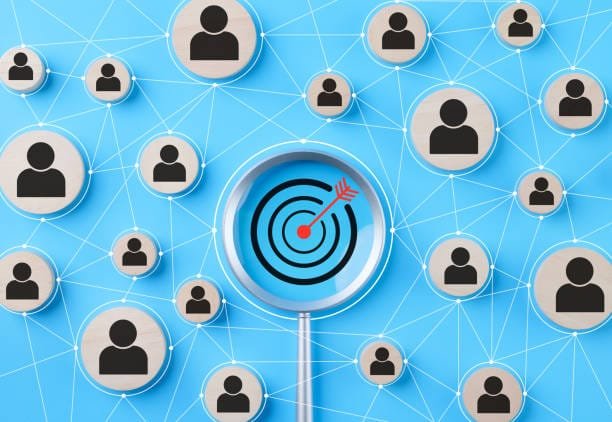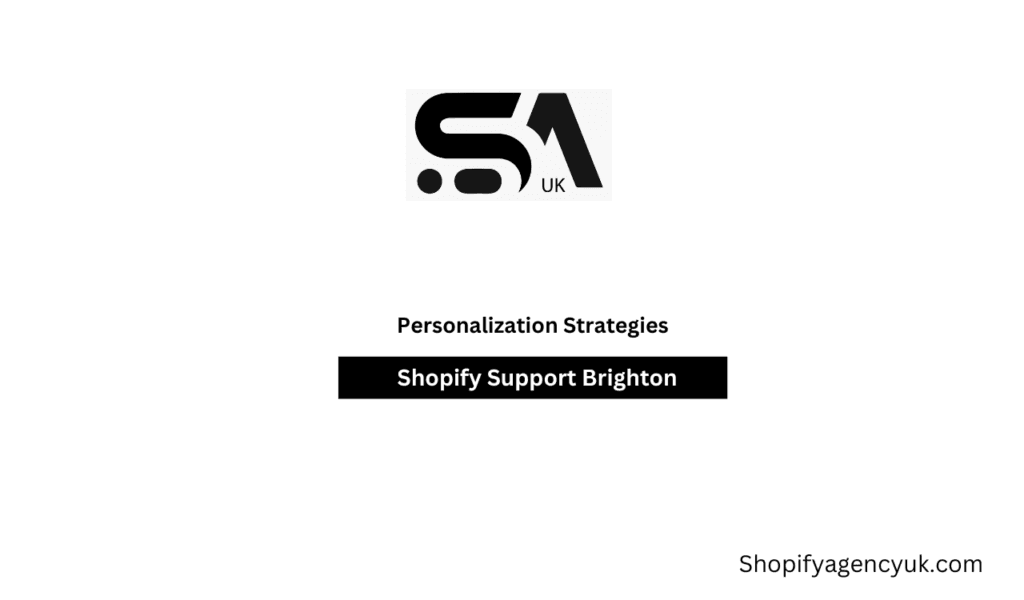Personalization Strategies: Elevate User Experience on Shopify
During this time, each year is becoming more competitive in the business world of online retail, so much that you can no longer give a singular omniscient experience to your customers. People’s expectations have changed.
They would like to be treated as the ones and only ones and do not accept conversational interaction by the machines anymore. Shopify store owners are in need of plain actionable personalization methods, to lead the user experience in the right direction.
This not only creates more engaging customer interactions but also a long-lasting relationship between customer and your brand.
In the subsequent study, we’ll discuss how merchants can use personalization strategies to get vast success, in customer satisfaction, and brand loyalty.
The most remarkable personalization technique is to combine unique elements and to point out the differentiation of your brand on the website, thus providing to each visitor the feeling of experiencing a special and personal moment with your brand.
Why Personalization Matters in eCommerce

Online businesses need to realize that personalization is one of the most crucial factors that can bring them success. A personalized interaction is where the client feels that the store “gets” them by offering the products, recommendations, and messages that correspond to their behavior.
The Benefits of Personalization
- User experience improvement: Personalization would create a smooth shopping experience, an enjoyable process, and a time-saving solution than the plain shopping experience without it.
- Growth in purchases: By showing customers products and promotions developed specifically for their requirements, you are mostly raising the percentage of purchase.
- Customer satisfaction: The customers that are made to feel important are more likely to come back to your store and advise it to their acquaintances through personal interaction.
It is shown that 91% of the customers who are provided with personalized recommendations and offers are outputting along with the brands. Among the strategies employed by the Shopify merchants, personalization is the most acclaimed and too the only one that is proven to work within a stereotypic space.
Key Personalization Strategies to Elevate User Experience on Shopify
1. Leverage Customer Data for Tailored Experiences
One of the most effective mechanisms of personalizing customers is to use the information directly from them and create their own unique shopping experience like from Shopify Growth Agency. Observed customers’ shopping patterns, prior purchase history, and location would allow you to suggest personalized product recommendations, promotions, and content.
How to Use Customer Data for Personalization
- Based product suggestions: Exhibit personalized recommendations by taking a look at and even using browsing or purchasing behavior for a given customer. You can use applications like Bold Product Recommendations or Nostoi to automatize this process.
- Dynamic content: Showcase dynamic content such as banners, pop-ups, and email campaigns when the page is visited by the customer that happen upon their requirements, locale, or previous actions.
- Location targeting: Take benefit of using geolocation to show area specific data, like offers, shipping information, language settings, to the user.
By evaluating the gathered data about the consumer and employing it, you are able to create experiences that will stimulate everything that is of interest to every user, leading to a more satisfying shopping trip.
2. Implement Personalized Email Marketing Campaigns
Email marketing is still the most effective way used to communicate with both your customers and your potential customers. And not only that, it is one of the best tools to use in the personalization process.
Addressing personalized emails that contain the customer’s name, recommendations, or reminding him or her of left items in the cart could lead to the issue of the higher involvement from their side.
Personalization Tactics for Email Marketing
- Segment your audience: Use the email tools that Shopify offers, or you can also subscribe to some other apps like Flavio to segment your clientele according to demographics, purchasing behavior, or the level of their interaction with you. This allows you to send targeted emails to particular groups.
- Product recommendations: Incorporate product suggestions that are based on the recipient’s browsing history or past purchases.
- Abandoned cart recovery: Trigger a sequence of the so-called reminder emails to those whose carts were left unattended reminding them of paying for their purchases. Another suggestion is to add a personalized offer like a discount or free shipping so that more transactions are influenced.
- Personalized subject lines: Create email subject lines including the client’s name or mention products that they showed interest in.
Personalized email marketing is a way to keep customer loyalty high by both making your brand a protagonist in the daily routings of your clients and delivering the content that really interests your would-be buyers.
3. Create a Personalized Homepage Experience
Homepage is the first thing that people see when they visit your Shopify store and it can be used to impress them by making the experience unique where you feel involved. The homepage adaptation to the visit history or other customer interaction with your site would facilitate the way of capturing their attention and guidance toward the products or content that they like the most.
Homepage Personalization Tactics
- Welcome back message: Leverage platforms such as Shopify Flow to show personalized greetings for coming back customers stating the last product they checked or suggesting something alike.
- Shows items you recently viewed: Shows products that you recently viewed making it easier for you to spot the items, you were thinking of getting.
- Product categorization according to user preferences: Try the product categories and banners shown on the homepage to be in accordance with the customer preferences or their browsing history.
A personalized homepage will help customers feel that they aren’t anonymous that they are remembered and appreciated, thus, increase their shopping time and even making a decision to buy.
4. Use Personalized Product Bundles and Upsells
Another tool for personalization is the creation of product packs or upgraded goods that correspond to the customer purchase list and the customer’s preferences. This approach besides bettering user experience has a positive side effect of increase of average order value (AOV).
Personalization for Bundles and Upsells
- Customized bundles: Apply Shopify applications like Bold Bundles on the website to come up with product packs for each customer. For example, in a case where a user buys a camera, you can also suggest lenses or tripods as accessories using personalization.
- Up-sell recommendations: The product range that the shoppers are looking at can be stretched if the software suggests better models or complements.
- After purchase upsells: After a customer completes a purchase, automatically offer new products when the checkout process is running or when the transaction is finished. It is a good chance to suggest them other products that may be useful to them.
The use of data to propose custom product packs or ask-ups can help you to enhance sales and build a more individual relationship between you and your buyers.
5. Utilize Personalized Push Notifications and Pop-Ups
The last few years have seen a boom in personalized push notifications and pop-ups since they became one of the most useful tools of the time that help to support the user experience, learning, or any other important task more intelligently and more effectively.
These alerts may be about the discounts, restocked items, and or other news that the customer needs and they are based on his behavior.
How to Personalize Push Notifications and Pop-Ups
- Behavior-triggered pop-ups: At the initial stages of buying a product, the customer can see a pop-up offering a discount code or something special if the customer spends over a certain amount. You can let them have free shipping if they are a customer from a location of your choice (if you are using Geolocation).
- Enable restock notifications: The service of sending notifications to the clients who register their preference for the notification about the restock of the goods are easily implemented. This type of personalized approach is to ensure they get what they want.
- Special offers: Periodically send offers that are linked to their buying history or preferences. These offers can be sent either as push notifications or pop-ups.
These procedures will ensure the receipt of relevant and valuable information that is both wanted and needed without any chance of disrupting when the information is to be passed on to the customer.
6. Build Personalized Loyalty Programs
There’s a connection between personalization and loyalty. The implementation of a loyalty program that is spurred by customer rewarding offers would be a nice, fast way to build more loyalty and in turn, have more customers returning for more of their purchase needs in the future.
Personalization in Loyalty Programs
- Rewards adapted to customer habits: Personalizing rewards on the basis of customer purchase behavior is a common strategy. It can be the case where you provide them with discounts on the product they are used to purchase or rewarding loyal shoppers with exclusive offers.
- Tiered reward programs: It would be very useful to have a tiered reward program at your store that would allow a customer to earn separate perks as he/she spends more money or makes more transactions.
- Special offers: Send personalized offers to the most loyal users, e.g. a birthday present, or a way of purchasing new products in advance.
Personalized loyalty programs can make customers feel valued, which means that they will be more likely to stick with you and purchase again, thus, you may activate the increase of the so-called CLV.
FAQs
How can personalization strategies improve the user experience on Shopify?
Smart personalization strategies make each shopping experience exclusive to the customer by understanding their buying habits and making them feel like the interaction was specially and personally for them.
What are some examples of personalization strategies for Shopify stores?
Some examples include personalized product suggestions, custom email campaigns, dynamic content that changes on the homepage based on user activity, behavior-triggered pop-ups, and customized product bundles or upsells.
How can personalized email marketing boost customer loyalty?
Personalized emails that include product recommendations, tailored offers, and abandoned cart reminders make customers understand that you are aware of their problems, thus building a stronger emotional connection and repeat transactions.
What tools can I use to implement personalization on Shopify?
You can decide between various third-party applications on Shopify such as Bold Product Recommendations, Nosto, Klaviyo, Justuno, and Bold Bundles according to the kind of personalization you are going to do for instance from product recommendations to loyalty programs.
Can personalized push notifications improve user engagement?
Actually, yes they can. Personalized push notifications deliver the right information at the right time and can be particularly effective in encouraging customers to engage and subsequently make a purchase.
Conclusion
By personalization, you bring a bit of magic to the world that immerses users and stands out among the rest. The user would have an absolutely amazing experience since the company knows them, provides tailor-made content, and all the stages are covered by personal touch.
With personalized emails, the connection can be deepened as the customer gets to see their own personal benefits and dedicated customer only offers. Consequently, the customer relationship will be more evident as fewer satisfied customers are likely to leave your store.
